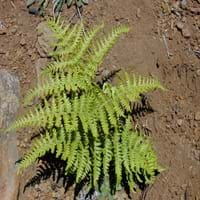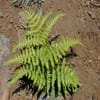Life Span
Perennial
Perennial
Origin
World, Pandemic
Southeastern Asia
Types
Pteridium arachnoideum, Pteridium caudatum, Pteridium centrali-africanum
Bigleaf hydrangea, Hortensia, Smooth hydrangea, Oakleaf hydrangea, Annabelle
Number of Varieties
Not Available
Habitat
meadows, Shady Edge, Woodland Garden Dappled Shade
Forest edges, Hillside, Woods
USDA Hardiness Zone
3-12
9-11
Sunset Zone
1a, 1b, 2a, 2b, 3a, 3b, 4, 5, 6, 7, 8, 9, 10, 14, 15, 16, 17, 18, 19, 20, 21, 22, 23, 24
H1, H2, 17, 23, 24
Habit
Thicket/Colonizing
Spreading
Flower Color
Not Available
Blue, Dark Purple, Light Purple, Red, White
Flower Color Modifier
Bicolor
Bicolor
Fruit Color
Brown
Not Available
Leaf Color in Spring
Light Green, Lime Green
Green, Light Green
Leaf Color in Summer
Green
Green, Light Green
Leaf Color in Fall
Yellow, Gold, Brown
Green, Light Green
Leaf Color in Winter
Not Available
Light Green
Leaf Shape
Pinnate
Oblovate
Plant Season
Spring, Summer, Fall
Spring, Summer, Fall, Winter
Sunlight
Full Sun
Partial shade, Full Shade
Type of Soil
Loam, Sand
Loam
The pH of Soil
Acidic, Neutral
Acidic
Soil Drainage
Well drained
Well drained
Bloom Time
Not Available
Spring, Summer
Tolerances
Not Available
Drought
Where to Plant?
Ground
Container, Ground
How to Plant?
Divison, Spores
Seedlings, Stem Planting
Plant Maintenance
Medium
Medium
Watering Requirements
Average Water Needs, Medium
Not Available
In Summer
Lots of watering
Average Water
In Spring
Moderate
Moderate
In Winter
Average Water
Average Water
Soil pH
Acidic, Neutral
Acidic
Soil Type
Loam, Sand
Loam
Soil Drainage Capacity
Well drained
Well drained
Sun Exposure
Full Sun
Partial shade, Full Shade
Pruning
Remove damaged leaves, Remove dead branches, Remove dead leaves, Remove dead or diseased plant parts
Remove damaged leaves, Remove dead branches, Remove dead leaves
Fertilizers
All-Purpose Liquid Fertilizer
All-Purpose Liquid Fertilizer
Pests and Diseases
Red blotch
Red blotch
Plant Tolerance
Not Available
Drought
Flower Petal Number
Single
Single
Foliage Texture
Medium
Fine
Foliage Sheen
Matte
Glossy
Invasive
Sometimes
Sometimes
Attracts
Insects
Bees, Flies
Allergy
Carcinogenic, Stomach cancers
Chest tightness, Diarrhea, Dizziness, Nausea, Vomiting
Aesthetic Uses
Not Used For Aesthetic Purpose
Not Available
Beauty Benefits
Good for skin
Not Available
Edible Uses
Yes
Not Available
Environmental Uses
Air purification
Air purification
Medicinal Uses
Anthelmintic, Antiemetic, Antiseptic, Diuretic, Poultice, Refrigerant, Tonic
Fever, Kidney problems, Urinary tract problems
Part of Plant Used
Leaves, Root
Flowers, Root
Other Uses
Adhesive, Basketary, Used as a dye, Used for making soaps, Used in biomass
Not Available
Used As Indoor Plant
No
Not Available
Used As Outdoor Plant
Yes
Yes
Garden Design
Groundcover
Container, Groundcover, Hanging Basket, Houseplant, Tropical
Botanical Name
PTERIDIUM aquilinum
DAVALLIA trichomanoides
Common Name
Bracken, Western brackenfern, Decomposition brackenfern, Hairy brackenfern
Squirrel's Foot Fern
In Hindi
Bracken Fern Plant
Hydrangea
In German
Bracken Fern Pflanze
Hortensie
In French
Bracken Fern Plante
Hortensia
In Spanish
Planta de helecho
Hortensia
In Greek
Bracken Fern Plant
υδραγεία
In Portuguese
Bracken Planta Fern
Hortênsia
In Polish
Bracken Fern roślin
Hortensja
In Latin
Pteridium aquilinum Planta
Hibiscus
Phylum
Pteridophyta
Not Available
Class
Filicopsida
Not Available
Order
Polypodiales
Not Available
Family
Dennstaedtiaceae
Davalliaceae
Genus
Pteridium Gleditsch
Not Available
Clade
Not Available
Not Available
Tribe
Not Available
Not Available
Subfamily
Not Available
Not Available
Number of Species
Not Available
Not Available
Season and Care of Bracken Fern and Squirrel's Foot Fern
Season and care of Bracken Fern and Squirrel's Foot Fern is important to know. While considering everything about Bracken Fern and Squirrel's Foot Fern Care, growing season is an essential factor. Bracken Fern season is Spring, Summer and Fall and Squirrel's Foot Fern season is Spring, Summer and Fall. The type of soil for Bracken Fern is Loam, Sand and for Squirrel's Foot Fern is Loam while the PH of soil for Bracken Fern is Acidic, Neutral and for Squirrel's Foot Fern is Acidic.
Bracken Fern and Squirrel's Foot Fern Physical Information
Bracken Fern and Squirrel's Foot Fern physical information is very important for comparison. Bracken Fern height is 60.96 cm and width 91.44 cm whereas Squirrel's Foot Fern height is 6.56 cm and width 10.50 cm. The color specification of Bracken Fern and Squirrel's Foot Fern are as follows:
Bracken Fern flower color: Not Available
Bracken Fern leaf color: Light Green and Lime Green
Squirrel's Foot Fern flower color: Blue, Dark Purple, Light Purple, Red and White
- Squirrel's Foot Fern leaf color: Green and Light Green
Care of Bracken Fern and Squirrel's Foot Fern
Care of Bracken Fern and Squirrel's Foot Fern include pruning, fertilizers, watering etc. Bracken Fern pruning is done Remove damaged leaves, Remove dead branches, Remove dead leaves and Remove dead or diseased plant parts and Squirrel's Foot Fern pruning is done Remove damaged leaves, Remove dead branches and Remove dead leaves. In summer Bracken Fern needs Lots of watering and in winter, it needs Average Water. Whereas, in summer Squirrel's Foot Fern needs Average Water and in winter, it needs Average Water.


